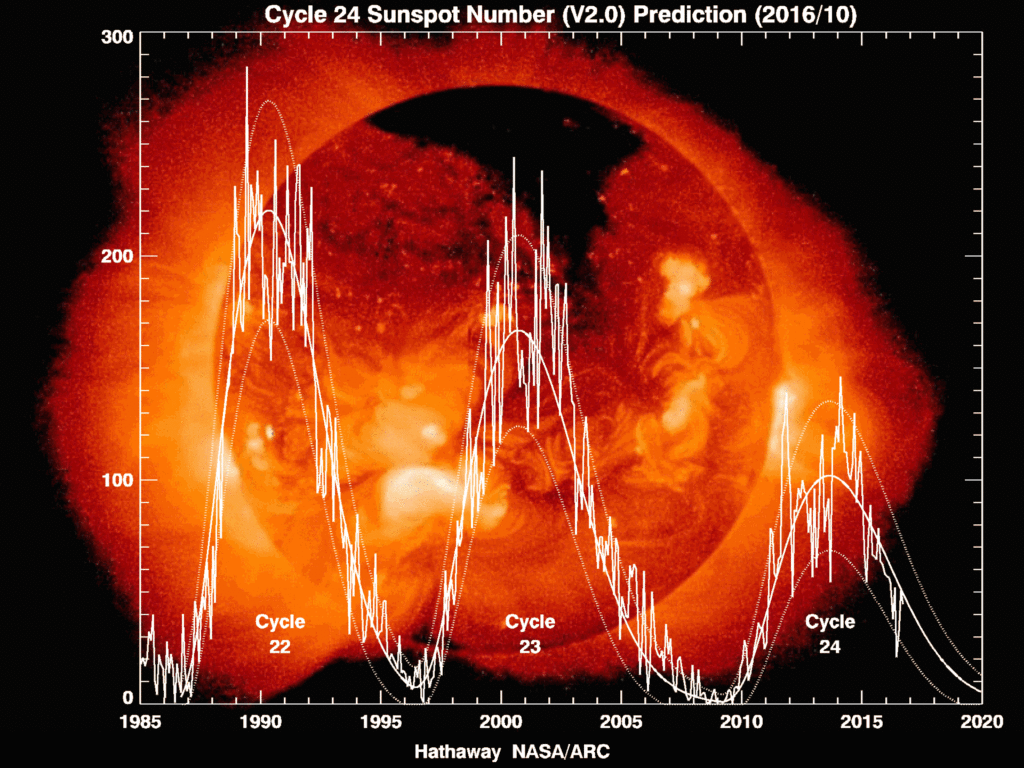Aurora borealis photos
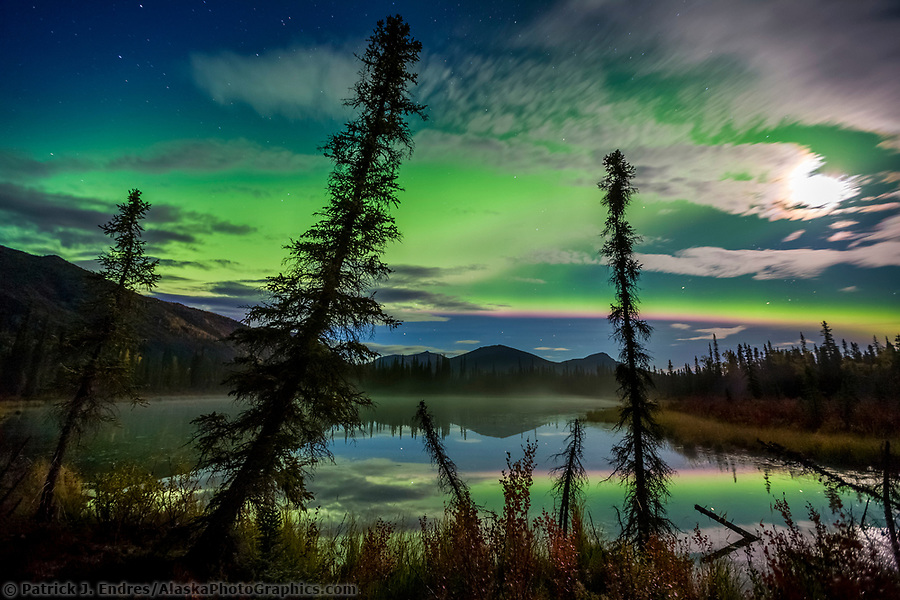
Aurora borealis (northern lights) over a small taiga pond in the Brooks Range mountains, Arctic, Alaska. (Patrick J. Endres / AlaskaPhotoGraphics.com)
The Aurora
My nature photography career includes countless sleepless nights in the field under dark skies, waiting, watching, and capturing thousands of aurora borealis photos. This page offers some points of interest and links to photos and image galleries. All aurora photos on this site are available as stock photos for commercial licensing or as fine art display pictures for home and office decor.
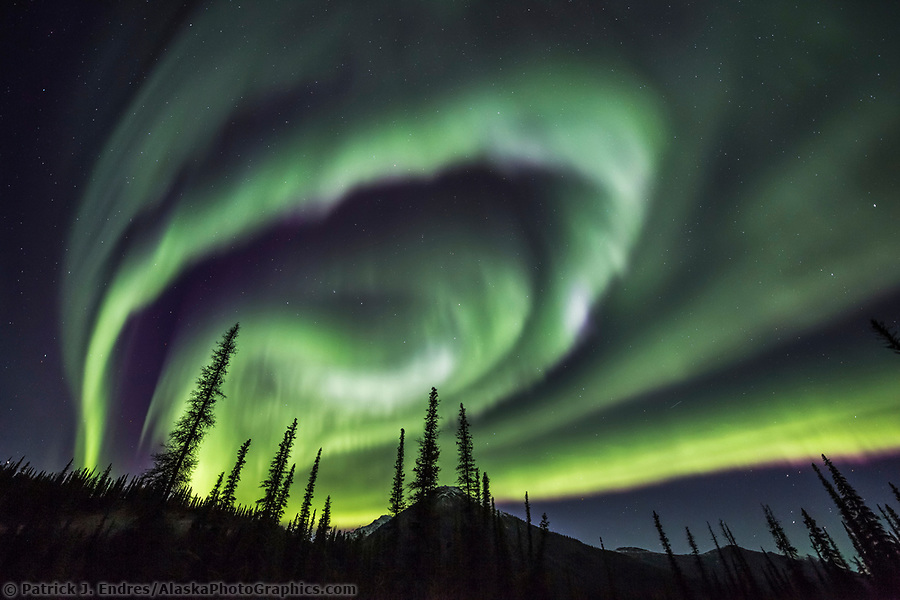
The Aurora borealis lights the night sky in Alaska’s Brooks Range, Arctic, Alaska (Patrick J Endres / AlaskaPhotoGraphics.com)
My quest for aurora borealis photos (northern lights)
In late March, high above Alaska’s Arctic circle, I stood in the snow, watching the mountain horizon merge with darkness as the final light faded into a cold, silent night. Surrounded by miles and miles of nothing and everything, I felt the power and solitude of wilderness; I felt tiny and beautifully alone. My photography career was young, my enthusiasm high, and my motivation strong.
Sight yielded to sound as my vision faded during that ambiguous moment of changing light when you can and cannot define objects any longer. A great-horned owl called from the spruce-dotted hillside of the Brooks Range, soon followed by the howling chorus of a pack of wolves.
A few minutes later, I gazed into a star-flecked sky to find faint green wisps of the aurora borealis that seemed to appear out of nowhere. I rushed for my camera, and in those first late-night and early-morning hours, I began a pursuit of aurora borealis photos that had yet to end.
Alaska and the Aurora
The aurora borealis, also called the northern lights, is a phenomenon of visual wonder that has captured the imagination of people for centuries. Alaskans are lucky. The state is uniquely situated directly under the auroral oval (auroral belt), which makes it the only place in the United States where the aurora borealis can be seen regularly under dark skies. In Fairbanks, Alaska, the Aurora can be seen approximately 2/3 of the year, provided the skies are cloud-free and dark. The Aurora often appears in a ring shape, circling the dark sky like a splendid crown. When you see this in the Northern Hemisphere, it is called aurora borealis. If you’re in the Southern Hemisphere, it is called aurora australis.
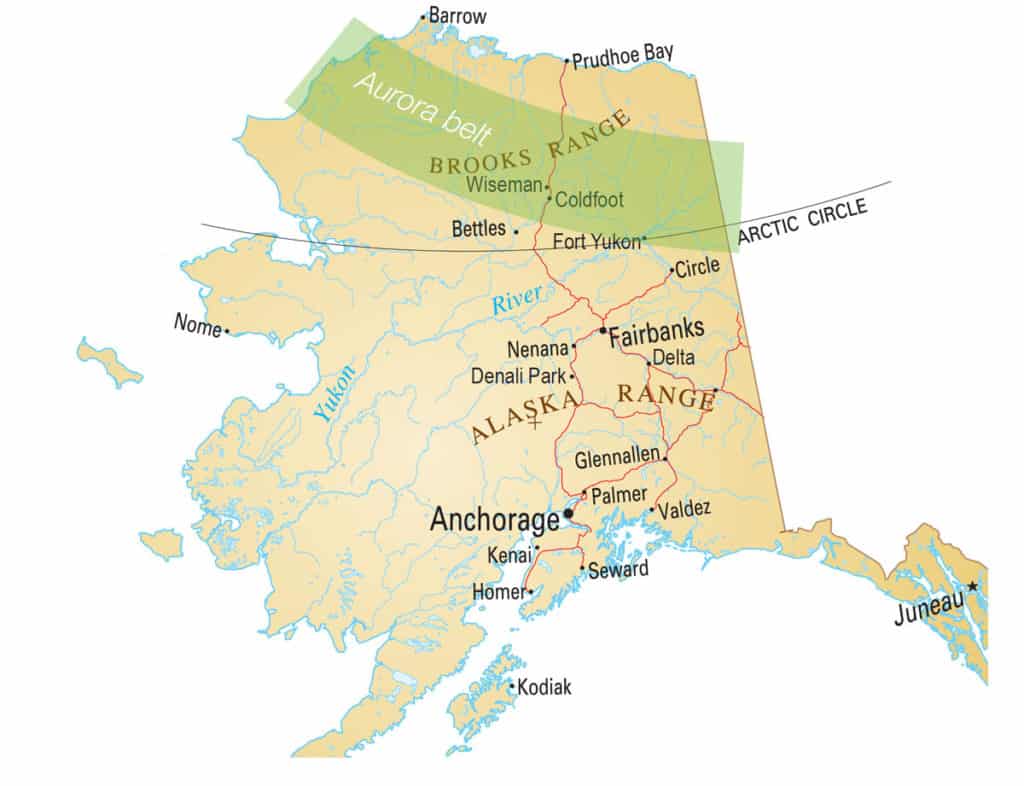
Illustration excerpted from the eBook “How to Photograph the Northern Lights” by Patrick Endres
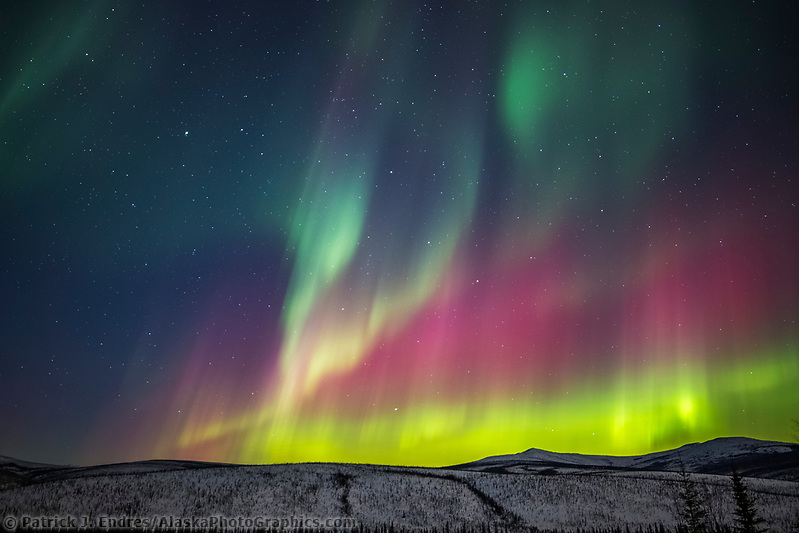
A colorful display of the northern lights over the White Mountains in Alaska’s interior. The White Mountains National Recreation Area. (Patrick J Endres / AlaskaPhotoGraphics.com)
Destination Fairbanks, Alaska
In the United States, Alaska is the clear winner as a northern lights photography destination because of its proximity to the aurora belt. And the weather in Fairbanks, Alaska, contributes to many nights of clear skies for winter viewing. Neal Brown, professor emeritus of the University of Alaska Geophysical Institue and aurora scientist, says:
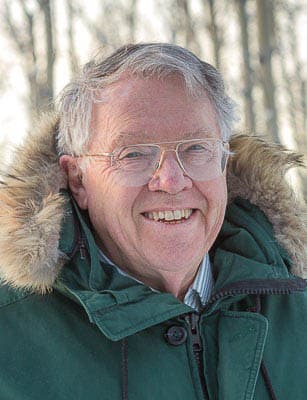
Neal Brown
“Fairbanks, Alaska, offers special advantages for those who want to see and photograph the Aurora. The great east–west stretch of the Brooks Range to Fairbanks’ north and the Alaska Range to the south block movements of moist air and clouds. This gives the interior of Alaska (and Fairbanks in particular) a continental dry, cold climate and, therefore, frequently clear skies. The crown of light, the typical oval of the Aurora, hovers around Earth’s magnetic poles and varies in its southern reach depending on the strength of solar storms. Most nights, this puts the northern aurora oval right over the top of the southern part of the Brooks Range of Alaska, near Fort Yukon. Auroras line up on Earth’s magnetic latitudes and longitudes, so when looking for auroras, it’s more important where you are magnetically than geographically.”
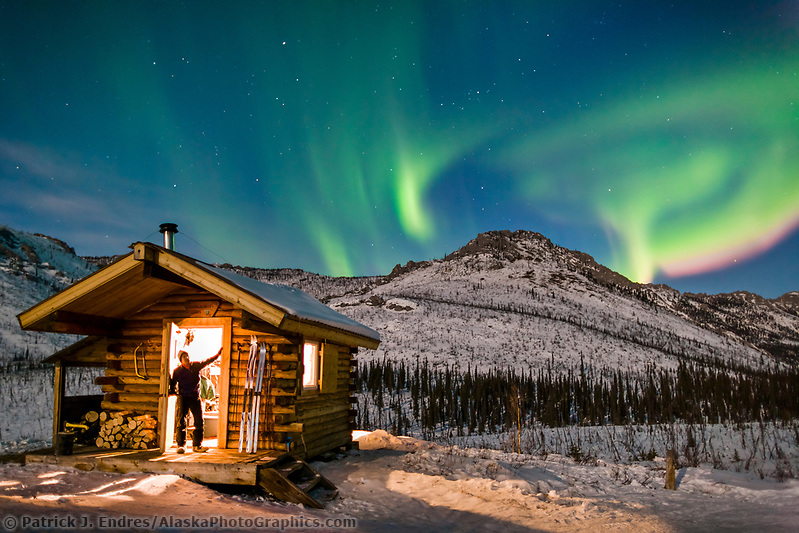
Aurora borealis over the Caribou Bluff recreation cabin in the White Mountains National Recreation Area, Interior, Alaska. (Patrick J. Endres / AlaskaPhotoGraphics.com)
What causes the Aurora?
Where does this mysterious light come from? Neal Brown says:

Neal Brown
“The Aurora are caused by solar storms that throw huge numbers of fast-moving electrons and protons away from the sun in a twisting mass of electric and magnetic fields. These microscopic particles typically take two days to travel 150 million kilometers from the sun to Earth. These energetic electrons and protons initially move past Earth for several thousands of miles before traveling back along Earth’s magnetic field lines into Earth’s atmosphere. Then, through a process similar to a neon sign, they collide with the atoms and molecules of Earth’s atmosphere to create the light we call the Aurora. Not all solar storms produce Aurora. Only if the solar storm’s magnetic field couples with Earth’s magnetic field do we have a chance to see auroras. The sun constantly releases radiation from charged microscopic particles (electrons and protons) in a solar wind flow. Earth’s gravity attracts these particles. Once the particles are close to Earth, our planet’s magnetic field kicks in.”
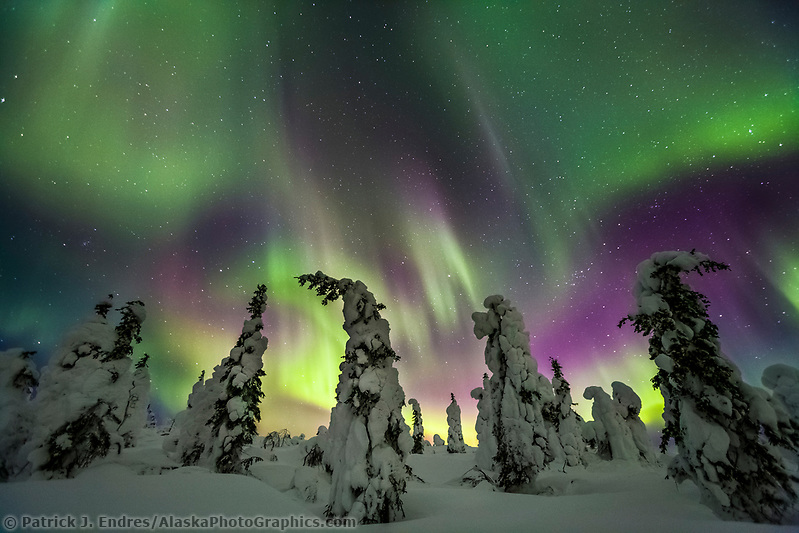
Aurora borealis over snow-covered spruce trees, interior, Alaska. (Patrick J. Endres / AlaskaPhotoGraphics.com)
Aurora activity
The Aurora is a luminous atmospheric phenomenon occurring most frequently above 60º North or South latitude. It is explicitly named according to its location, aurora borealis (northern lights) or aurora australis (southern lights). The aurora borealis and aurora australis are mirror images of one another. The term aurora Polaris, polar lights, is a general name for both. The Aurora consists of rapidly shifting patches and dancing columns of light of various hues. Extensive auroral displays are accompanied by disturbances in terrestrial magnetism and interference with radio, telephone, and telegraph transmission.
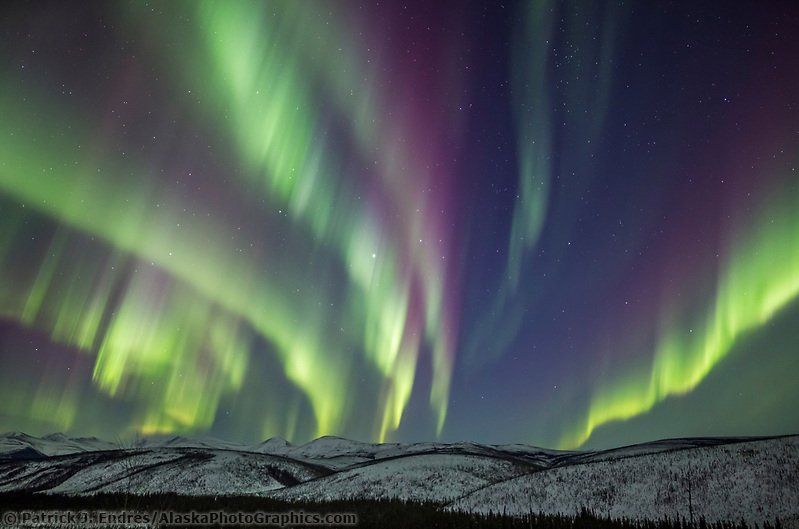
The colorful aurora arcs over the White Mountains National Recreation Area, Interior, Alaska. (Patrick J Endres / AlaskaPhotoGraphics.com)
Can we predict the Aurora?
Short-term aurora forecasts range from one to three days since that is the approximate time it takes particles ejected from the sun to reach Earth. If a large explosion happens on the sun and is headed toward Earth, we can be alert for possible aurora activity. But how accurate are aurora predictions? Neal Brown says:

Neal Brown
“We cannot accurately predict when the Aurora will occur on Earth. However, NOAA and others publish online records of solar activity compared with historical information over the last 400 years. We can predict how close we are to the most active sun storms from these records based on the current solar cycle. The storms originate well below the sun’s visible surface and can’t be seen until they pop out to the sun’s outer layers, where we can then use many kinds of instruments to diagnose what that storm consists of and what it might do. Using instruments aboard the broad array of Sun-Earth orbiting spacecraft, we can now estimate the energy of these sun storms and determine if the solar storm will get to Earth and result in Aurora.”
Space science
In recent years a sophisticated fleet of spacecraft and satellites have been deployed to monitor the sun and Earth environments. These exploratory crafts transmit real-time solar,
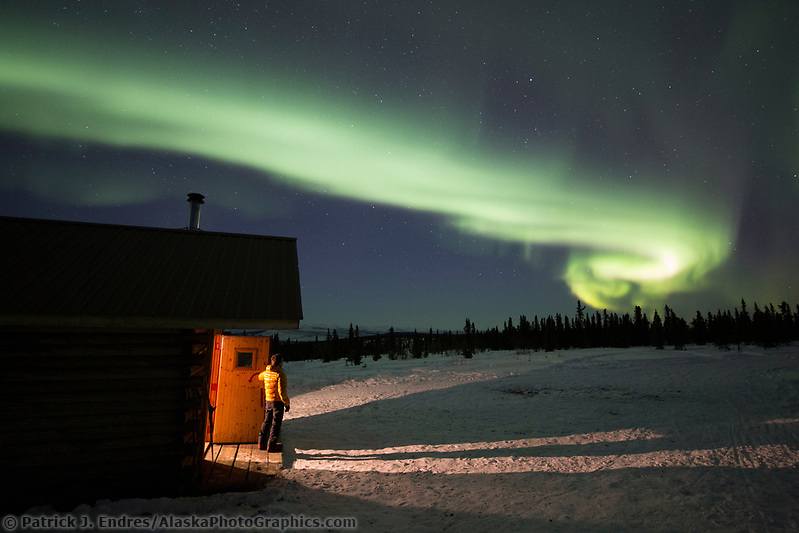
Man views the Aurora in the White Mountains National Recreation Area (Patrick J Endres / AlaskaPhotoGraphics.com)
wind and geomagnetic information back to Earth. Thanks to digital photography, they also capture images from space that offer views and observational data of the Aurora never before seen. All this information has helped further our general understanding of the aurora and space science. However, the world’s leading space scientists still say that there is a lot we don’t understand about the Aurora and how to predict its occurrence. But one thing is clear; the sun is responsible for the aurora displays that are so popularly sought after by space enthusiasts, aurora viewers, and photographers alike.
The 11-year Solar Cycle
A complicated series of circumstances cause these events to happen. Still, the more significant solar storms that make the most dramatic and colorful Aurora displays visible in more southerly latitudes tend to occur around the peak of the 11-year sunspot cycle. We have current space science measurements to look at thanks to ground-based data stations and orbiting spacecraft that send back data. What Neal says about the 11-year solar cycle.

Neal Brown
“The gigantic electric and magnetic sun storms that create the Aurora follow an 11-year cycle of activity, with the current peak occurring in 2013. It is an 11-year cycle (or half of a 22-year cycle) because sunspots appear in pairs with a signature of magnetically “north” or magnetically “south.” At the end of 11 years, the spots switch their signature from “south” to “north” (or vice versa) and begin a new solar cycle. The 11-year sun cycle is not always exact; it has seen periods of significant variation throughout history.”
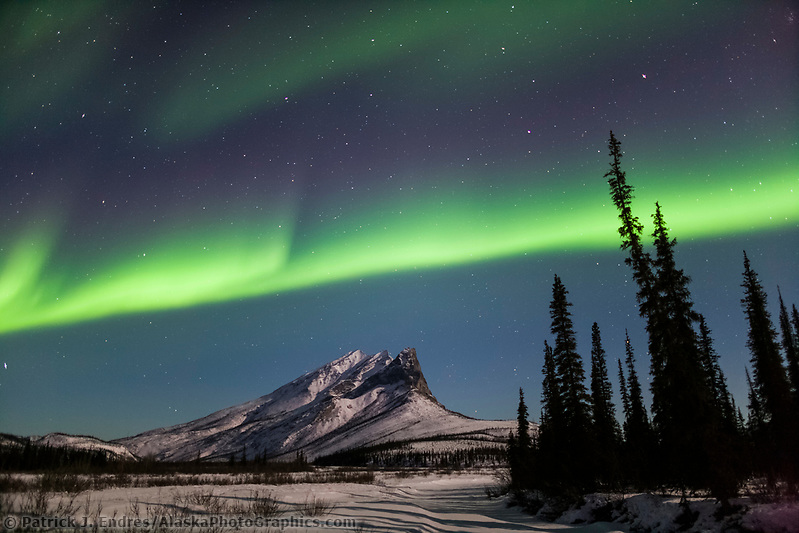
Aurora borealis over Mount Sukakpak, Brooks Range, Alaska. (Patrick J. Endres / AlaskaPhotoGraphics.com)
Aurora shapes and patterns
While aurora shapes vary night to night, they follow a general range of movement that is somewhat predictable, and the types of shapes can be recognizable. Because of this, it is possible to some degree to anticipate aurora action and movement, although it’s less obvious to a novice. Where the Aurora are located in the night sky also changes their appearance, much the way curtains hanging in a window look different if you view them from an oblique angle or from underneath.
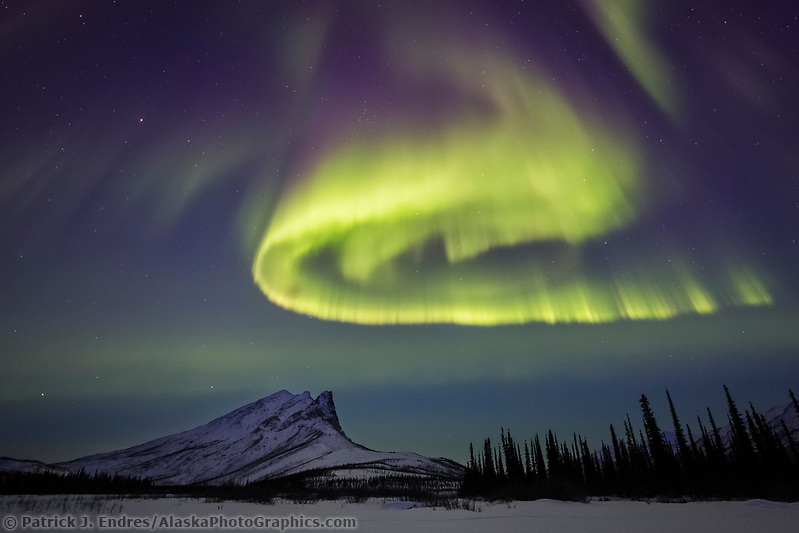
Aurora dances over Sukakpak mountain in the Brooks Range in Alaska’s Arctic. (Patrick J Endres / AlaskaPhotoGraphics.com)
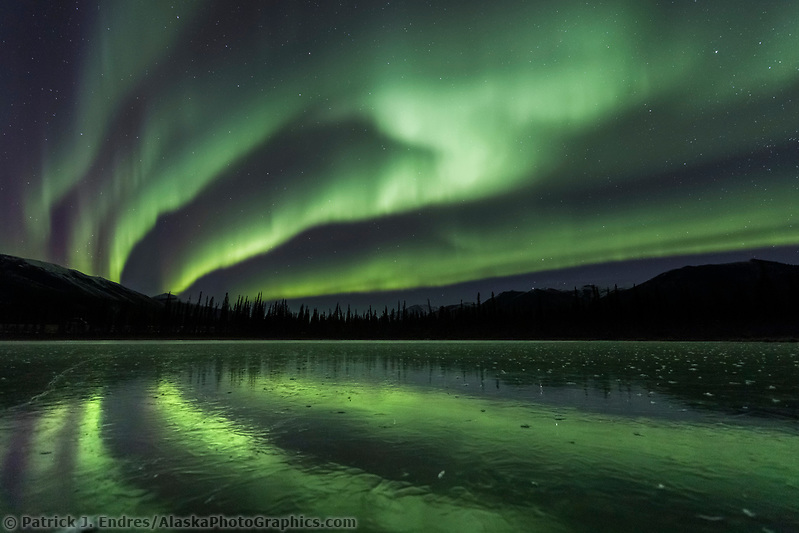
Aurora borealis reflects on a frozen lake in the Brooks Range mountains, Arctic, Alaska. (Patrick J Endres / AlaskaPhotoGraphics.com)
The aurora shapes appear differently depending on the angle from which they are viewed. These shapes have descriptive names: homogenous arc, rayed arc, or corona. See Dr. Syun-Ichi Akasofu’s book The Northern Lights: Secrets of the Aurora Borealis for further explanation on this topic and to familiarize yourself with the types of aurora shapes and when they occur during an average auroral display. Neal Brown on Aurora Shapes:

Neal Brown
“Most often, the Aurora appears as hanging curtains of light aligned from east to west along Earth’s magnetic field lines. As the evening progresses, the Aurora brightens and develops vertical rays caused by electrical currents that flow down the magnetic field lines. As these currents get larger, huge folds resemble Greek omega letters. Scientists have determined mechanisms for some of these configurations but are still trying to formulate a clear explanation for the general public.”
Aurora colors
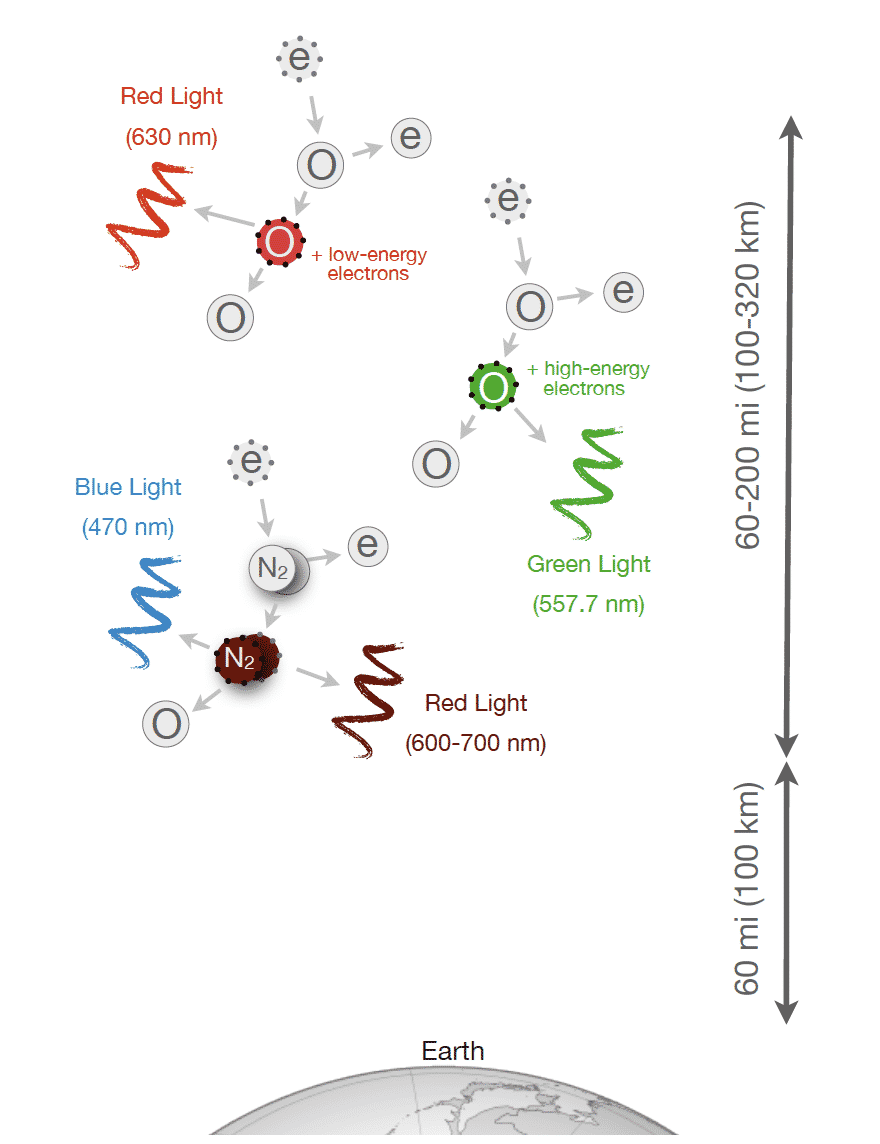
The aurora colors of red, green, and blue light occur at different altitudes due to the presence of other atmospheric gases—illustration is taken from How to Photograph the Nothern Lights eBook.
A bright light occurs when the solar wind collides with Earth’s atmospheric atoms and ions. After the collision, the excited electron returns to its original energy level and emits a wavelength of light that we see as color. The atmospheric gas determines the color at altitude (mainly atomic oxygen and nitrogen), its electrical state, and the energy of the particle that hits the gas.
The colors of the Aurora are made up of red, blue, and green light emissions. Other colors may be seen as a mixture, or blending, of the three. The typical human eye can see wavelengths from about 430 to 790 nm and has a maximum sensitivity of around 555 nm, the same wavelength as the green-colored Aurora.
Atomic oxygen causes the two most common Aurora, green, 557.7 nm (O plus high-energy electrons), and red, 630.0 nm (O plus low-energy electrons). Nitrogen (N2) causes the blues (470 nm) and reds (600-700 nm). Other lighter gases high in the ionosphere, such as hydrogen and helium, can contribute colors, but they are less visible to the naked eye.
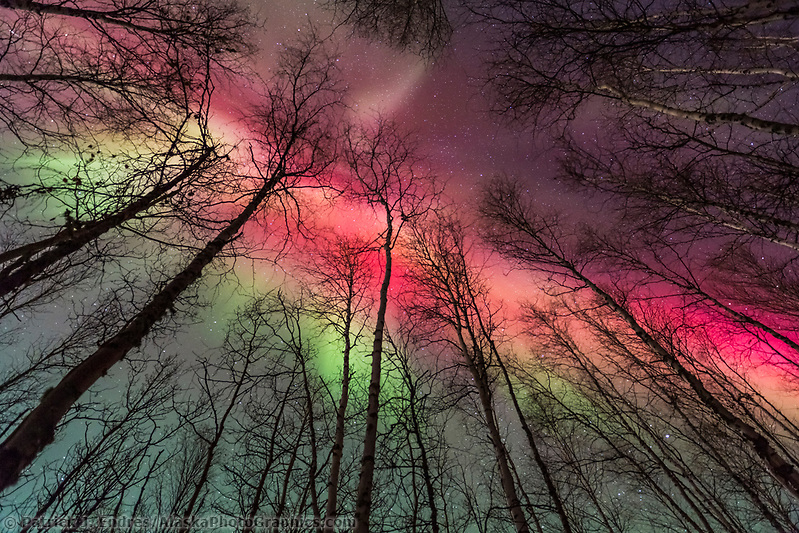
Vibrant red and green aurora borealis above the birch tree forest in Fairbanks, Alaska. (Patrick J Endres / AlaskaPhotoGraphics.com)
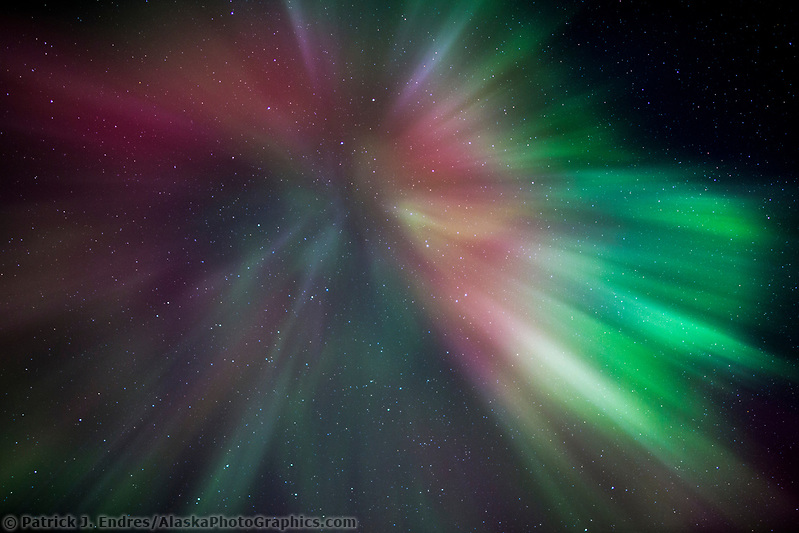
The northern lights burst into a coronal display during high activity in March 2013. (Patrick J Endres / AlaskaPhotoGraphics.com)
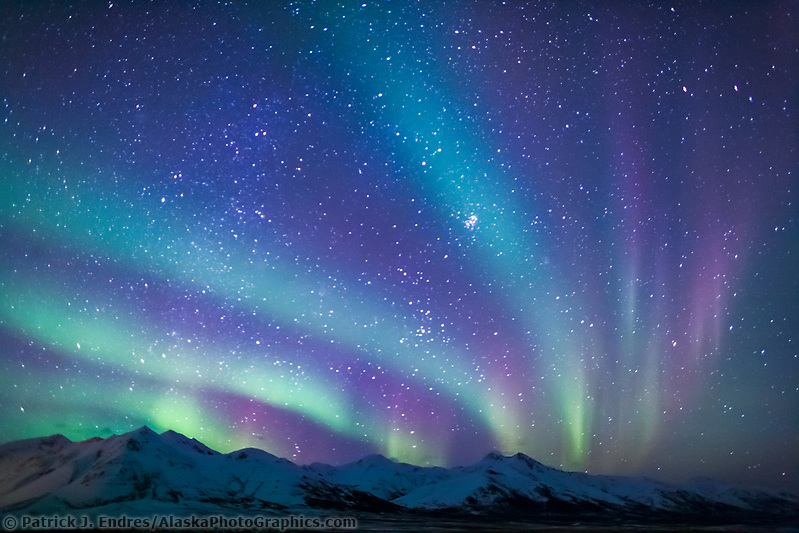
Colorful aurora borealis over the mountains near Chandalar Shelf, Brooks Range, Alaska, hovering over the Arctic National Wildlife Refuge. (Patrick J Endres / AlaskaPhotoGraphics.com)

